Five Rules Of App Localization In China: Money, Dating And App Store
I recently sat down with Rock Zhang, a Chinese mobile entrepreneur. Rock is my classmate from business school, and we have both worked in the mobile industry for a while. In an age when the best marketing is good product management, Rock knows how to make millions of Chinese users fall in love with an app. I asked him to share his thoughts on app localization.
For me, China has always been a hard market to crack. I’ve marketed several mobile apps in European and US markets, and my apps have been featured many times in the App Stores in Russia, Israel, Spain, Germany and the US. But in China, our growth was stalling, and I don’t think we ever got a request for promotional artwork to be featured in the App Store. Truth be told, my “Asian expansion strategy” usually boiled down to hiring freelance translators through Elance to help me localize App Store pages in Chinese, Korean and Japanese.
Soh Nee, Kevin and Eriko, the freelancers who I hired to work on several apps, would log into Weblate, a free open-source web-based translation system, and translate strings of text for in-app content. To localize App Store pages, I would send them screenshot designs and copy via email and Google Docs. The translators charged per source word count. It was cheap, but the approach was faulty at best. I feel the pain of many app developers and marketers who want to branch out to the East (especially now that Chinese App Store revenue has doubled over the last year) but lack resources, money, knowledge or other.
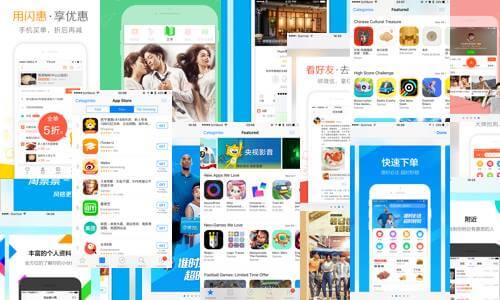
I’m not an expert in China. I’m a marketer and a Belarus-born European transplant in California. But I wanted to put together some kind of a beginner’s guide to localization in China for someone in design, marketing and product management who, like me, has little knowledge of Asia but a lot of ambition to grow their product overseas. Together with my good friend Bruce Wong, who is a cultural expert in Asia and has years of design thinking and user experience grooming at Stanford’s d.school, we’ve done research and come up with several simple localization tips. And we consulted Rock Zhang, the industry expert, to sketch out a general overview of the mobile market in China.
In this article, we’ll look at the top Chinese apps, including local market leaders such as Dianping, the Yelp of China, and the few US apps that are successful in China, such as the NBA app and Uber, and discuss how content, graphics and tone can make or break an app’s success.
Chinese App Market: Android Versus iOS
As tantalizing as it sounds for marketers to tap into the pool of well over 500 million smartphone users, China has historically been a hard market to crack. With the ban of Google Play in China and the hundreds of local app stores that have sprung up as a result, there’s no streamlined process for submitting apps on the Android market; getting featured and ranked is subject to negotiation, and IP rights regulation is lax.
Over 200 app stores compete on the Android market in China, but only the five big players truly own it: 360 Mobile Assistant, YingYongBao of Tencent, Baidu Mobile Assistant, Wan Dou Jia (Pea Pod) and PP Assistant. Many different stores for Android means different terms for developers. “The revenue sharing depends on the store, usually 50⁄50. For Tencent, it can be as high as 70⁄30, and the store takes the majority of the revenue,” Rock Zhang says.
“If you want to get your app featured on one or more of the multiple Chinese app stores, be prepared to negotiate,” Rock told me. Getting featured in China on the Android market is mostly about guanxi, the Chinese term for connections and networking. For an exclusive launch, you can negotiate rankings, getting featured and even revenue-sharing. The way it works is that you localize an app and submit the APK (Android application package) to several app stores. Then, you talk to the app stores’ reps and see what they offer in exchange for the right to be the first one to have it.
For iOS, Apple has made the process of app submission and approval more straightforward in China. The App Store has navigated China’s restrictive Internet policies and paved the path to local hearts and wallets after partnering with the country’s most popular payment service, UnionPay. Now, app developers looking to bring their product to the Chinese market can do so simply by adding Chinese localization. Seems easy: Translate App Store screenshot captions and in-app text, then add Simplified Chinese as a new language in iTunes Connect (the iOS developer’s dashboard). Not so fast.
Adding to the complexity of introducing your app to China is the huge influence of ecosystems belonging to China’s biggest tech players: Tencent, Alibaba and Baidu. Tencent’s WeChat is a prime example of the “app within an app” trend in China, where users can order food, request taxis and pay friends, all within their social messaging platform. Becoming a part of an ecosystem can give your app a huge boost because millions of users are a part of it (Wechat broke the 700 million mark in early 2016). However, committing to an ecosystem does come with some disadvantages — namely, agreeing to be an exclusive app for one of the big three companies. This double-edged sword is yet one more layer to understand before you begin to localize for China.
Competing in China is tricky. To appeal to Chinese audiences, you need to go above and beyond word-for-word translation and adapt the app’s content and positioning for local consumers, potentially seeking partnerships with Chinese players to achieve maximum success. Here are a few rules to get you started.
Marketing To Chinese Users: Five Rules To Play By
Keep It Casual
This rule applies not only to the linguistic aspect of localization, but also to the higher-level approach to marketing and positioning for Chinese users. Top apps in the Chinese App Store speak to users on a personal level and in a helpful and simple tone.
For example, apps such as Taobao and Iqiyi cleverly describe a screenshot’s feature in four to six characters, followed by easy-to-understand specifics.

When localizing your screenshot’s caption, don’t cut corners with a simple translation tool. Instead, go with a trusted translator or service familiar with current Internet lingo and slang in China.

Make It Social
Even when they are not primarily social, the most successful Chinese apps demonstrate some social or sharing ability in one or some of their screenshots in the App Store. Mainstream users in China don’t use social platforms such as Facebook and Twitter because of the government ban (they would have to access those and other banned websites through a VPN, which is too costly for many Chinese). However, it is important to add some social layer to boost engagement. WeChat and Weibo, the WhatsApp and Twitter of China, are great ways to integrate social into your app.

Money, Money, Money
Localizing in China is no small feat, so prepare to adapt to the expectations of local users. It’s a developing country — making and saving money is a big goal for many Chinese smartphone users. In a country where the savings rate hovers around 50%, more than double than that of the US, app developers and marketers understand that savings and discounts are a huge hit with Chinese users.
One striking example is the Chinese tradition of sending red envelopes (hong bao) filled with money around the Chinese New Year. This ritual has been directly digitized into virtual hong bao that users can send to each other. The trend has caught on not only among payment apps, but also in other categories of apps.
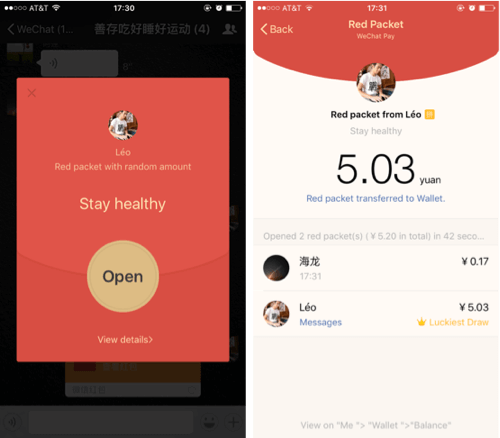
If yours is an e-commerce app, then explicitly showing discounts of 50%, 20%, even 5% is enough to draw the attention of thrifty Chinese mobile shoppers. Local mobile publishers have also taken the lead in using financial incentives to make their apps stickier. Dianping, the Yelp of China, draws and retains users through its amazing selection of coupons in many of its listed restaurants. For app developers, business partnerships and cross-promotions with coupons and rebates are a very effective way to attract users.
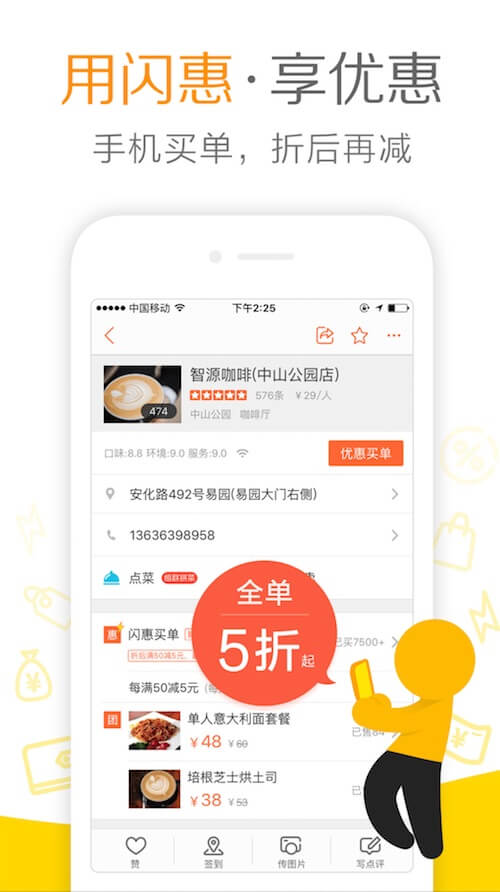
Original Content Rules
As you walk on the street or take a subway in China, you’ll notice that everyone is looking down at their screens. Mobile content is constantly being devoured, and fresh content is always being sought out. Thanks to companies such as Xiaomi and innovative smartphone manufacturing, more and more people in China are becoming owners of Internet-enabled devices. China’s smartphone penetration rate has reached 50%, which, for a country with a population of over 1.4 billion, translates to a lot of eyeballs and screens.
Youku, which might be thought of as the Chinese YouTube but is actually more like the Chinese Netflix, is a leader in producing and distributing original content on the Internet. However, you don’t have to be a big media company to promote original content. Even social media apps are touting their original content from users. Although this tip depends on the app you’re trying to localize, if you do have original content to show, definitely make it clear in the App Store.

Obey Cultural Norms
As with all localization efforts, pay attention to cultural norms, particularly in China. Some things that are considered normal and mainstream in the West, such as a dating app like Tinder, are untouchable subjects. Momo, somewhat of an equivalent of Tinder in China, has an entirely different approach, refraining from suggestive, racy photos of attractive males and females. Instead, the App Store page features balanced genders and positions the app as a way for people to meet up and socialize.
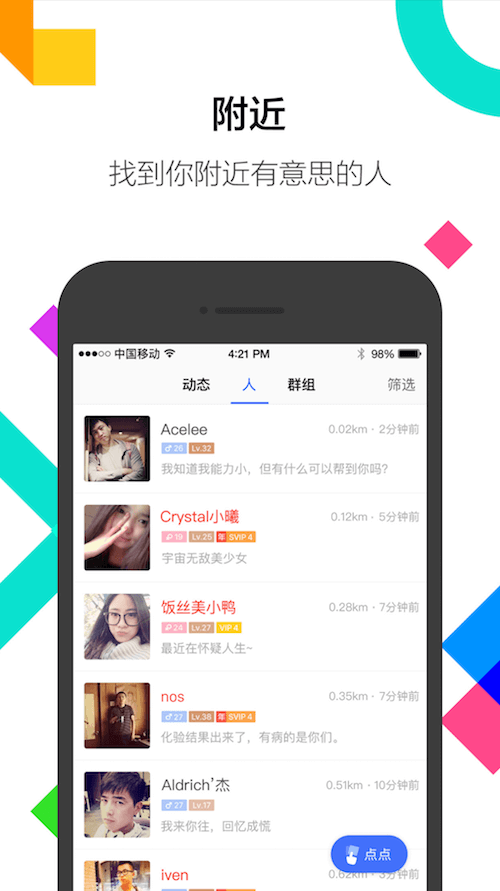
But that doesn’t mean you always have to play it safe and not take a more risqué approach. In fact, one of Iqiyi’s screenshots features attractive female “anchors” and exotic sports cars. This shamelessly male-oriented approach, perhaps outlandish for app stores in the West, makes sense with Iqiyi’s large segment of young male users. While gender norms are one cultural difference, there are also different norms with age, income, occupation and more, making it very important to understand the nuances of Chinese culture for situations related to your app.
Long-lasting cultural norms have indeed influenced Chinese behaviors and mindsets around mobile, but keeping up with recent and emerging cultural trends can also be crucial to localization success. The tuhao, a term that originally referred to wealthy Chinese local landlords but now applies to uncouth Chinese nouveau riche with ostentatious taste, has played a role in changing how the Chinese, especially younger ones, view money. Often the butt of jokes, tuhao have become a mainstream topic in Chinese society and are blamed for any showy displays of wealth — the Chinese have even given the gold iPhone 5s and 6 an apt popular nickname, tuhao jin (tuhao gold). With all of the tuhao backlash, no one wants to be called out as a tuhao by their friends, so Alipay, the world’s largest mobile payments platform, reassures potential users that they don’t have to worry about “showing off” when giving red envelopes (see rule 3).
Knowing cultural norms is one step, and pinning down the segment you’re targeting is another. Consulting an expert or doing your own user research will reveal the kinds of cultural overtones that your app should avoid — or highlight.
The tips above offer a starting point to plan your localization strategy in China. While native Chinese apps dominate the many app stores in China, the smashing success of a few Western challengers shows that staying the course and heeding important cultural distinctions is imperative for any successful venture into the Chinese market.
Case Study 1: Wording Matters: How Uber Takes Over China With Red Cars And “The People’s Taxi”
With one of the very few foreign apps in the top charts in China, Uber takes localization seriously. With a strong commitment to hyper-localizing in the many international markets where the ride-sharing app operates, Uber is intensely focused on winning the Chinese market, which entails tailoring its service to Chinese consumers. Rather than the usual moving black car icons on the app’s map, Uber drivers in China are represented with red cars — a welcome nod to both communist history and the auspicious cultural meaning of red in China. City-specific localization caters even further to local riders. In addition to the regular UberX and UberBlack services, Tianjin, near Beijing, has “The People’s Uber,” and the cosmopolitan hub of Shanghai has UberEnglish for English-speaking drivers.
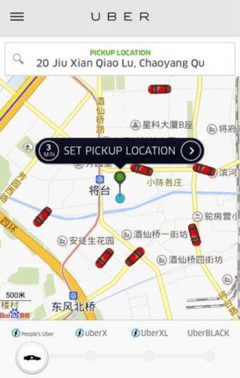
Case Study 2: Make Friends With Locals: How NBA Partners With Tencent To Stream Locally Curated Content In China
The NBA, which has a huge fanbase in China, has taken its time to launch a mobile app that truly engages its Chinese fans. Launched in January 2016 and racking 105,000 downloads in the first few hours, the app gives 11 million Chinese fans access to game recaps and behind-the-scenes footage. Through a partnership with Tencent to stream games and feature content, the NBA China app has a wide reach with China’s growing base of smartphone and tablet users. Player and historical statistics are customized for Chinese fans, for whom some NBA players are more popular than they are in the US.
Even if you don’t have the resources and connections of companies such as Uber and the NBA, following their intense focus on Chinese consumers and culture is a good way to get started. Small things, like Uber’s red cars and “The People’s Uber,” add a delightful touch for Chinese users as they choose between the multitude of competing apps. Customized content, as the NBA’s China app shows, is a must for growing user engagement. Even with the excitement of China’s current mobile market, playing patiently like the NBA and finding the right partnership is sometimes the best way to survive and thrive in China’s intensely competitive mobile market.
Conclusion
Many people think localization is as simple as translating in-app content and app store pages. It’s more complex than that.
While truly understanding the Chinese market and getting localization right is a long and involved process, we hope that the few valuable tips shared here get you started on the right path.
- Keep your marketing message casual and cool (hire a translator familiar with the local slang).
- Skip the Facebook authentication. Integrate with WeChat and Weibo instead.
- Offer deals and coupons for money-savvy Chinese users.
- If your app offers fresh and original content, showcase it in the first screenshot.
- Understand the general culture, but pin down the segment you’re targeting first and play up to different demographics, showcasing it in the first screenshot.
- Don’t underestimate the importance of details such as color and wording.
- Seek local partnerships to help you curate and customize content.
More than many nations, China is a country where language and tone carry nuanced differences that can be easily overlooked with hasty translation. Getting the message right is critical, but if you go beyond the language and adopt a mindset of cultural awareness, the payoff will be well worth it.
Other Resources
- China Internet Watch.
A comprehensive website dedicated to all things Internet-related in China. Its mobile section is a great place to keep updated on the latest mobile app trends in China. - AppInChina.
A full-service marketing agency specializing in Chinese app store localization and promotion. It has a useful tool for identifying similar apps already existing on Chinese app stores. - Geert Hofstede.
An interactive tool that allows you to explore a country’s culture on the four core Hofstede dimensions. - web2asia.
Another agency for Chinese localization. Its blog articles are a great primer on Chinese e-commerce and search marketing. - China Web Design Trends 2015.
Kendra Schaefer for Smashing Magazine on the latest web design trends and digital habits in China. - Color Perception Considerations in Marketing Design for Chinese Market.
A great resource to consult for learning about what colors mean in their marketing implications in China.
Further Reading
- Beyond The Boring: The Hunt For The Web’s Lost Soul
- Showcase Of Web Design In China
- Showcase Of Web Design In China
- Web Design Is Dead. No, It Isn’t.





 SurveyJS: White-Label Survey Solution for Your JS App
SurveyJS: White-Label Survey Solution for Your JS App Agent Ready is the new Headless
Agent Ready is the new Headless


